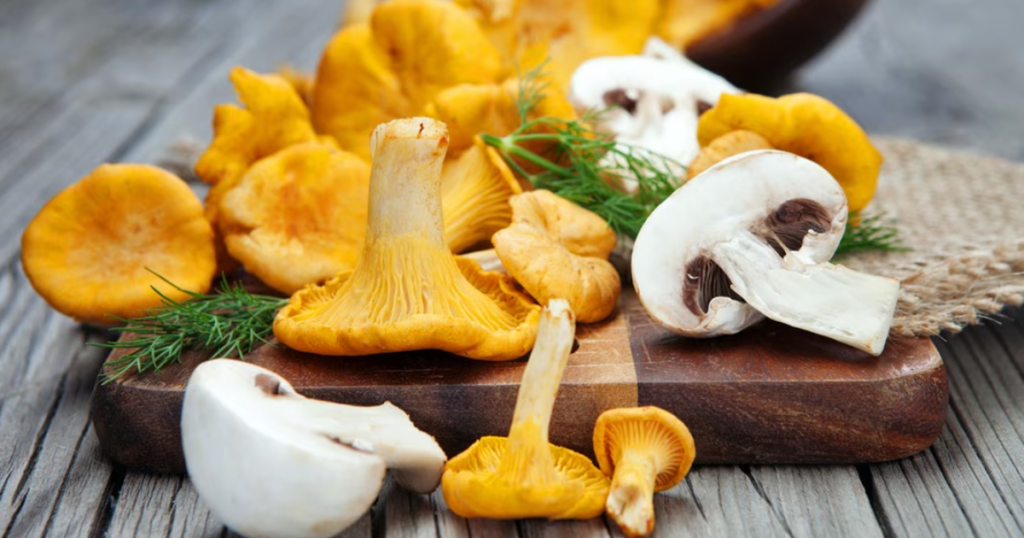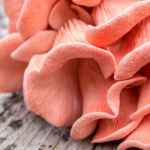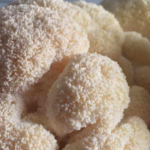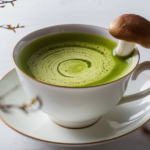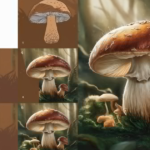Chanterelle mushrooms, with their distinctive golden hue and fruity aroma, have long captivated the palates of food enthusiasts and chefs alike. These prized fungi, found in forests across North America and Europe, bring a touch of elegance to any dish. Their delicate flavor profile, reminiscent of apricots and pepper, makes them a versatile ingredient in gourmet cuisine.
The world of chanterelle mushrooms and their role in elevating culinary creations. From their unique characteristics to their preparation methods and popular dishes, we’ll delve into why these golden treasures are so beloved. Join us on a gastronomic journey as we uncover the secrets of chanterelles and their place in the realm of fine dining.
The Allure of Chanterelle Mushrooms
A Culinary Treasure
Chanterelle mushrooms have been prized by chefs and food lovers for centuries, earning their place in gourmet cuisine. Their distinctive appearance, with a golden-yellow hue and trumpet-like shape, makes them instantly recognizable in the kitchen. These mushrooms possess a firm, meaty texture that holds up well in various cooking methods.
The flavor profile of chanterelles is truly unique, setting them apart from other mushroom varieties. They offer a subtle, fruity taste with hints of apricot and a peppery undertone that lingers on the palate. This complex flavor makes chanterelles a versatile ingredient that can enhance both savory and sweet dishes.
Seasonal Delight
Chanterelle mushrooms are a seasonal delicacy, typically available from late summer through fall in most regions. Their limited availability adds to their allure and makes them a highly anticipated ingredient in gourmet kitchens. Foragers and mushroom hunters eagerly await the chanterelle season, venturing into forests to find these golden treasures.
The seasonality of chanterelles also influences their use in cuisine, inspiring chefs to create dishes that celebrate the flavors of autumn. Many restaurants feature special chanterelle-focused menus during the peak season, showcasing the mushroom’s versatility. This seasonal aspect adds an element of excitement and exclusivity to chanterelle-based dishes.
Nutritional Profile and Health Benefits
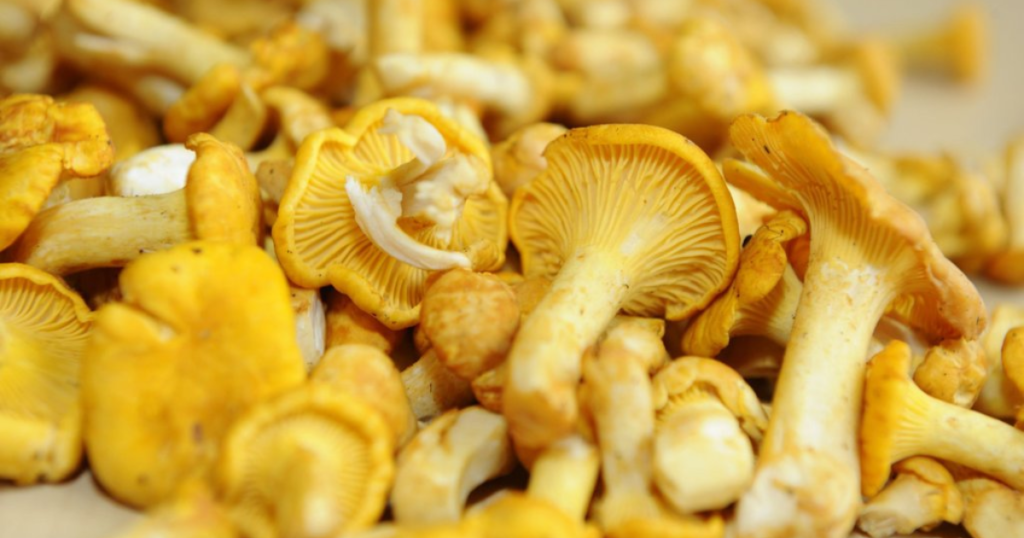
Nutrient-Rich Fungi
Chanterelle mushrooms not only bring flavor to dishes but also offer numerous health benefits. They are low in calories and fat, making them an excellent choice for health-conscious individuals. These mushrooms are a good source of fiber, promoting digestive health and helping to maintain a feeling of fullness.
Chanterelles are rich in various vitamins and minerals, contributing to overall well-being. They contain significant amounts of vitamin D, which is crucial for bone health and immune function. The mushrooms also provide B vitamins, including riboflavin and niacin, which support energy metabolism.
Antioxidant Powerhouse
One of the standout features of chanterelle mushrooms is their high antioxidant content. They contain various compounds that help protect cells from oxidative stress and inflammation. These antioxidants include beta-carotene, which the body can convert to vitamin A, supporting eye health.
Chanterelles also contain selenium, a mineral with antioxidant properties that plays a role in thyroid function. The presence of these beneficial compounds makes chanterelles not just a flavorful addition to meals, but also a nutritious one. Incorporating these mushrooms into your diet can contribute to overall health and well-being.
Sourcing and Selection
Foraging for Chanterelles
- Wild chanterelles grow in symbiotic relationships with certain trees, often found near oaks and conifers.
- Proper identification is crucial, as there are poisonous lookalikes such as the false chanterelle.
- Foraging should only be done by experienced mushroom hunters or with expert guidance.
- Sustainable foraging practices are essential to preserve chanterelle populations and their forest habitats.
For those interested in foraging, it’s important to learn from experienced guides and follow local regulations. Many regions offer guided mushroom foraging tours, providing a safe and educational experience. Always exercise caution and never consume wild mushrooms unless you are absolutely certain of their identification.
When foraging, look for chanterelles in mossy areas near hardwood trees, especially oak and maple. They often grow in clusters and have a distinctive fruity aroma. Proper harvesting techniques, such as cutting the mushroom at the base rather than pulling it up, help ensure future growth.
Purchasing Chanterelles
- Fresh chanterelles can be found at farmers’ markets, specialty grocery stores, and some high-end supermarkets.
- Look for firm, dry mushrooms with a fresh, fruity aroma and avoid those with dark spots or sliminess.
- Dried chanterelles are available year-round and can be reconstituted for use in various dishes.
- Some gourmet food suppliers offer frozen chanterelles, which can be a convenient option for off-season use.
When buying chanterelles, choose mushrooms that are firm to the touch and have a vibrant golden color. Avoid any that appear slimy, have dark spots, or emit an unpleasant odor. Fresh chanterelles should have a light, fruity scent reminiscent of apricots.
If fresh chanterelles are unavailable, dried or frozen options can be good alternatives. Dried chanterelles can be rehydrated in warm water before use, while frozen ones can be added directly to dishes. These options allow you to enjoy chanterelles year-round, even when they’re out of season.
Preparation and Cooking Techniques
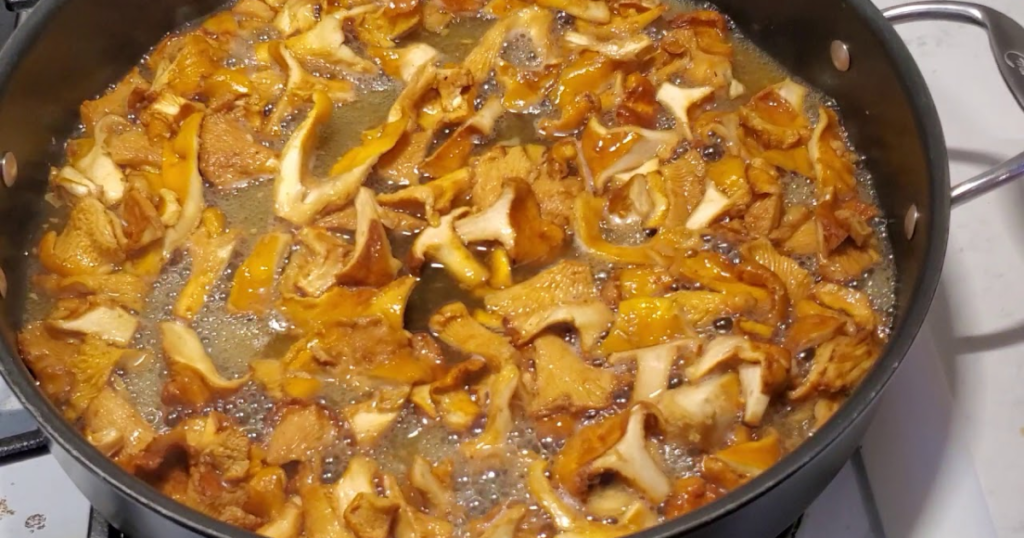
Cleaning and Storage
Proper cleaning and storage of chanterelle mushrooms are crucial to maintain their quality and flavor. Start by gently brushing off any dirt or debris with a soft brush or damp cloth. Avoid soaking chanterelles in water, as they can become waterlogged and lose flavor.
If necessary, rinse the mushrooms very briefly under cool running water and pat them dry immediately. Store fresh chanterelles in a paper bag in the refrigerator, where they can last for up to a week. Avoid storing them in plastic, which can trap moisture and cause spoilage.
Cooking Methods
Chanterelle mushrooms are versatile and can be prepared using various cooking methods. Sautéing is a popular technique that brings out their flavor and preserves their texture. Heat butter or oil in a pan over medium-high heat and cook the mushrooms until golden brown.
Chanterelles can also be grilled, roasted, or used in soups and stews. When cooking, avoid overcrowding the pan to ensure proper browning. These mushrooms pair well with herbs like thyme and parsley, as well as garlic and shallots.
Chanterelles in Gourmet Dishes
Classic Preparations
One of the most beloved ways to enjoy chanterelles is in a simple sauté with butter and herbs. This preparation allows the mushrooms’ natural flavors to shine through and can be served as a side dish. Chanterelles also make an excellent addition to risottos, adding both flavor and visual appeal to the creamy rice dish.
Another classic preparation is chanterelle cream sauce, often served over pasta or as a topping for meat dishes. The sauce highlights the mushrooms’ delicate flavor and creates a luxurious texture. Chanterelles can also be used in omelets, quiches, and other egg-based dishes for a gourmet breakfast or brunch.
Innovative Culinary Uses
Creative chefs have found numerous ways to incorporate chanterelles into innovative dishes. Some use them in desserts, such as chanterelle ice cream or custards, taking advantage of their subtle fruity notes. Others incorporate chanterelles into cocktails, infusing spirits with their unique flavor profile.
Chanterelles can also be pickled, preserving their flavor for use throughout the year. These pickled mushrooms make an excellent addition to charcuterie boards or as a garnish for salads. Some chefs even use chanterelles in savory pastries, creating elegant appetizers or main courses.
Pairing Chanterelles with Other Ingredients
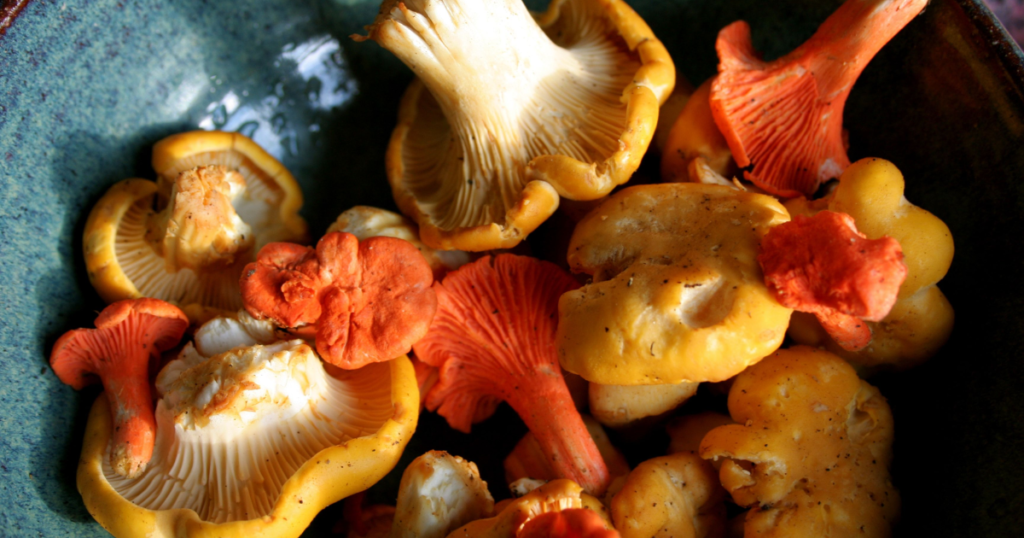
Complementary Flavors
- Herbs: Thyme, parsley, chives, and tarragon complement the delicate flavor of chanterelles.
- Alliums: Garlic, shallots, and leeks enhance the savory notes of the mushrooms.
- Dairy: Butter, cream, and soft cheeses like goat cheese pair beautifully with chanterelles.
- Proteins: Chicken, pork, and mild white fish work well with the subtle taste of chanterelles.
When creating dishes with chanterelles, consider ingredients that enhance rather than overpower their unique flavor. Light, creamy sauces can complement the mushrooms without masking their taste. Nuts like almonds or hazelnuts can add a pleasant texture contrast to chanterelle dishes.
Seasonal vegetables such as squash, pumpkin, and sweet potatoes pair well with chanterelles in autumn-inspired dishes. For a more decadent pairing, consider using chanterelles alongside other prized ingredients like truffles or foie gras.
Wine Pairings
- White wines: Chardonnay, Viognier, and Pinot Grigio complement the delicate flavor of chanterelles.
- Light red wines: Pinot Noir and Beaujolais can pair well with chanterelle dishes featuring poultry or pork.
- Sparkling wines: Champagne or Prosecco can provide a refreshing contrast to rich chanterelle preparations.
- Fortified wines: Dry sherry can enhance the nutty flavors in some chanterelle dishes.
When selecting a wine to pair with chanterelle dishes, consider the overall flavor profile of the meal. Lighter preparations may benefit from crisp white wines, while heartier dishes might call for a light red. Avoid overly tannic or heavy wines that could overwhelm the delicate mushroom flavor.
For non-alcoholic pairings, consider light herbal teas or sparkling water with a twist of lemon. These beverages can cleanse the palate and allow the subtle flavors of chanterelle dishes to shine.
Chanterelles in Different Cuisines
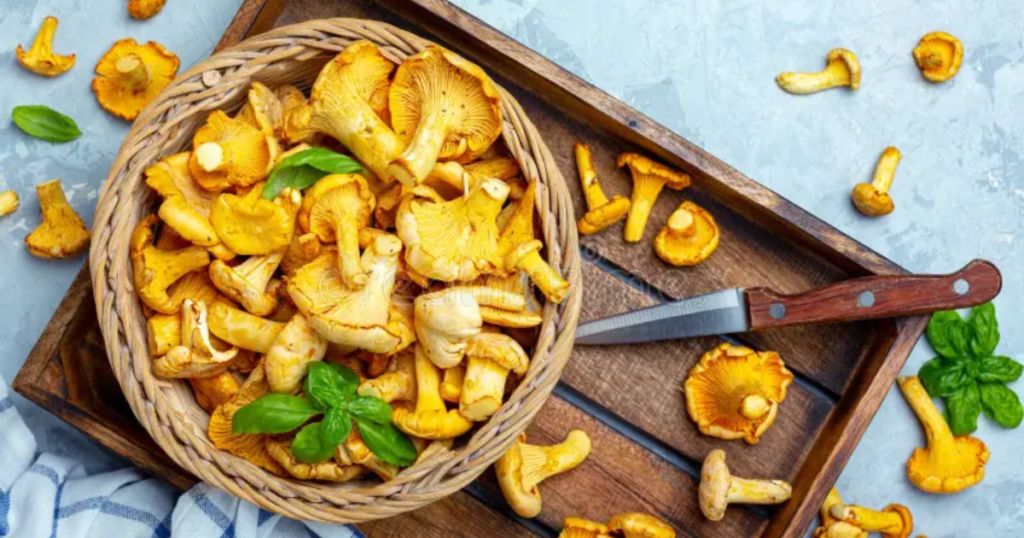
European Traditions
Chanterelle mushrooms have long been cherished in European cuisine, particularly in French, Italian, and Scandinavian cooking. In France, they are often featured in classic dishes like coq au vin and beef bourguignon. Italian chefs incorporate chanterelles into risottos, pasta dishes, and rustic soups.
Scandinavian cuisine celebrates chanterelles in simple preparations, often sautéed and served on toast or incorporated into hearty stews. In Germany and Austria, chanterelles (known as Pfifferlinge) are a beloved seasonal ingredient, featured in creamy sauces and as a side dish to schnitzel.
American Interpretations
In the United States, chanterelles have gained popularity in fine dining and farm-to-table restaurants. American chefs often incorporate these mushrooms into regional cuisines, creating unique fusion dishes. For example, chanterelles might be featured in a Southern-style grits dish or a Pacific Northwest-inspired seafood preparation.
Many American chefs also focus on showcasing local chanterelle varieties, emphasizing terroir and seasonality. This approach has led to innovative dishes that highlight the subtle differences between chanterelles from different regions. Some chefs even collaborate with local foragers to source unique, wild-harvested chanterelles for their menus.
You Will Also read:
Substitute for Cream of Mushroom Soup: Versatile Alternatives for Every Kitchen
Preserving Chanterelles
Drying Methods
Drying is an effective method for preserving chanterelles, allowing you to enjoy their flavor year-round. Start by cleaning the mushrooms thoroughly and slicing them into thin, even pieces. Arrange the slices on dehydrator trays or baking sheets lined with parchment paper.
If using a dehydrator, set the temperature to 115°F (46°C) and dry for 4-6 hours. For oven drying, set the oven to its lowest temperature and prop the door open slightly. Dry the mushrooms for 6-8 hours, turning occasionally, until they are crisp and brittle.
Freezing Techniques
Freezing chanterelles is another option for long-term storage. Clean the mushrooms and slice them if desired. Sauté the chanterelles in butter or oil until they release their moisture and are lightly browned. Allow the mushrooms to cool completely before transferring them to freezer-safe containers or bags.
For best results, remove as much air as possible from the container before freezing. Frozen chanterelles can be stored for up to 6 months. When ready to use, thaw the mushrooms in the refrigerator and use them in cooked dishes.
FAQs
Are chanterelle mushrooms safe to eat?
Chanterelles are safe and edible when properly identified and prepared. However, always ensure you’re consuming genuine chanterelles, as there are poisonous lookalikes.
Can I grow chanterelle mushrooms at home?
Cultivating chanterelles at home is extremely difficult due to their symbiotic relationship with tree roots. Most chanterelles are wild-harvested or foraged.
How long do fresh chanterelle mushrooms last?
Fresh chanterelles can last up to a week when stored properly in the refrigerator. Use them as soon as possible for the best flavor and texture.
What’s the best way to clean chanterelle mushrooms?
Gently brush off dirt with a soft brush or damp cloth. If necessary, rinse briefly under cool water and pat dry immediately.
Can I eat chanterelle mushrooms raw?
While chanterelles can be eaten raw, cooking them enhances their flavor and texture. It also eliminates any potential harmful bacteria.
Conclusion
Chanterelle mushrooms hold a special place in gourmet cuisine, prized for their unique flavor and versatility. Their golden hue and delicate taste add elegance to a wide range of dishes, from classic European preparations to innovative American interpretations. Whether foraged from the wild or purchased from specialty markets, chanterelles offer a seasonal delight that captivates chefs and food enthusiasts alike.
As we’ve explored, these mushrooms not only bring flavor to the table but also offer nutritional benefits. Their versatility in cooking, ability to pair with various ingredients, and methods of preservation make chanterelles a valuable addition to any culinary repertoire. Whether you’re a professional chef or a home cook, experimenting with chanterelle mushrooms can elevate your dishes and introduce new dimensions of flavor to your cooking.

